Wintertime means snowstorms, at least for those who live in colder or more temperate climates. Even the Deep South can experience winter weather, but it probably won’t come with much snow. That snow, while beautiful, can be dangerous. It makes our roads difficult to drive on and can weigh down our power lines, causing them to break. The only question then, is just how long is the blackout going to last.
Long blackouts, defined as those which last more than three days, are on the increase. Some might try to blame that on climate change, but the reality is that it is mostly due to poor maintenance of our infrastructure. The same amount of snow and ice will cause lines to fail, which wouldn’t have failed even 20 years ago. At the same time, our grid is running near capacity at all times, reducing the ability to simply reroute power from somewhere else.
What this means is that we are all likely to experience a power outage sometime during the winter and that outage will take longer to repair. While most are repaired rather quickly, the increase in long blackouts means that we can’t count on them being repaired within an hour or two. The only thing we can count on is what we do ourselves, to make sure that our families will be okay.
Our Critical Electrical Needs
Pretty much everything we do today requires electricity. Even so, that doesn’t mean that everything we do is something that we need to do. There are a lot of things we can do without in a blackout, without it causing us any real harm. But there are also things which are critical to our survival, and which we need to maintain somehow, even when the power goes out. These things include
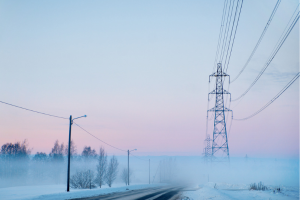 • Heating our homes
• Heating our homes
• Lighting
• Refrigeration
• Emergency medical equipment (for those who need it)
• Pump for water (for those who are on a well)
• Some communications
Related: The First Thing You Should Do in a Winter Blackout
So, the real question we need to ask ourselves, is what are we going to do about these six things, so that we aren’t affected by a blackout; or if we are, that we are only minimally affected? While that might mean producing our own electrical power; it doesn’t necessarily mean that. We could come up with alternate plans.
Heating
The most critical thing to consider, when we’re talking about blackout proofing out homes, is heating. Those who experienced blackouts during Winter Storm Uri, in February of 2021, well remember how cold it got and how dangerous that cold was. Many thousands of people were displaced from their homes, because of not having any alternate means of heating. A few thousand even lost their lives to the cold.
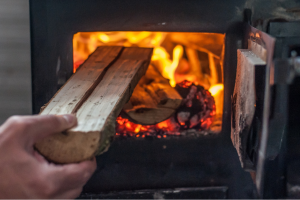 Within the prepping community, our most common alternate means of heating is wood. Wood fireplaces and wood-burning stoves have been around a long time and are extremely effective means of heating a limited area. But then, any system we use is only going to heat a limited area. We can’t really expect to heat our entire home during a blackout.
Within the prepping community, our most common alternate means of heating is wood. Wood fireplaces and wood-burning stoves have been around a long time and are extremely effective means of heating a limited area. But then, any system we use is only going to heat a limited area. We can’t really expect to heat our entire home during a blackout.
The problem with wood heat is that not everyone can use it. There are few landlords who will allow a fireplace or wood-burning stove to be installed into their apartments or rental homes. The fire risk is just too high. On the other hand, it’s the most cost-effective means of emergency heat for those who own their homes.
So, what do we do if we can’t use wood heat? Freeze?
The two other options to consider, when wood heat can’t be used is propane and kerosene. Both will heat a room, just like a wood-burning stove will; but will be more expensive to operate. Kerosene for heating is only available in some parts of the country. The key here is to have enough kerosene on-hand, as kerosene heaters will go through a five-gallon can in about 25 hours. That much kerosene will cost roughly $25.00.
Small propane heaters generally run off of one-pound propane bottles, which cost roughly $5 each. Compared to buying propane in 20-pound bottles, that’s about five times as expensive. While the actual run time varies from heater to heater, you can expect to be able to run the heater for about 3 hours at its maximum heat setting and about 6 hours at its minimum heat setting. That’s more expensive than kerosene, if you’re buying your propane in one-pound tanks. But it’s cheaper if you’re buying it in 20-pound tanks. An adapter exists, allowing you to fill the one-pounders from a 20-pound tank. And this is how you can make a propane tank to heat your home forever.
Watch out with both kerosene heaters and propane heaters, making sure that any you buy are rated for indoor use. Not all are and those which are not could lead to asphyxiation.
Lighting
Lighting is probably the easiest place to blackout proof our homes. First of all, we can simply go to bed when the sun goes down and wake up when it rises in the morning.
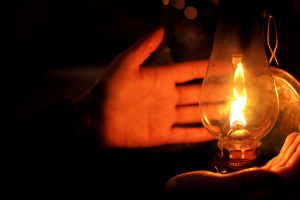
That greatly reduces our need for artificial lighting. If your home was built with ample windows or even a couple of skylights, you will probably have adequate lighting inside during the daytime hours.
But if not, you’re going to have to augment the natural light somehow.
While we can do that with flashlights and battery-operated lamps, it is considerably more cost-effective to use oil-burning lamps. Those will run an average of 258 hours on a gallon of oil, making them the lowest-cost alternative lighting available, even cheaper than candles. The lamps themselves don’t have to be expensive either, as there are several low-cost options available.
Refrigeration
Modern refrigerator/freezer units are actually very energy efficient.
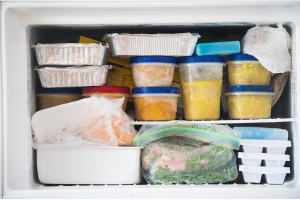
That’s not much help if there’s no energy for them to use; but if you are producing your own electricity, that’s the first thing to consider plugging in. Even if it is not plugged in, most will keep food cold for a minimum of 24 hours, giving you time to get things organized and put your emergency plan into effect. The fridge would be your least of the problems with this.
In a way, worrying about refrigeration during a winter blackout is a bit of a joke, especially if the blackout was caused by a storm. As long as it is cold, you can take the food out of the fridge and put it in the garage or even on the back porch to keep it from spoiling. If there’s ice or snow outdoors, that can be harvested and put in the freezer to keep food cold. If you don’t want the mess of melting snow in your freezer, put the snow in an ice chest instead and move the food there.
Emergency Medical Equipment
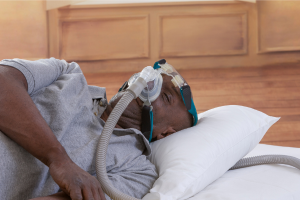
This is one of those areas where you may not be able to come up with an alternative. Of course, that depends a lot on the type of equipment we’re talking about. Your wheelchair-bound family member may not be able to use their electric wheelchair for a few days; or that bedridden elderly relative who has a hospital bed in the home may not be able to adjust their bed.
What this means is that other family members will have to do what they can to help those people out. That’s really nothing new, as families have been in that place for centuries. We’ve just gotten used to having fancy medical equipment to use.
But not all emergency medical equipment falls into the category of not being absolutely necessary. If you have a family member who is on oxygen, their oxygen generator or pump might be necessary for their survival. That means either having enough oxygen in tanks to get them through or being able to generate enough electricity to operate that equipment.
Well Pump
Not everyone has a well on their property; but many of those who do depend on that pump as their only source of water. If the power goes out, their water goes out as well. at that time, they either have to be able to depend on stored water (something that we preppers do anyway) or producing enough electricity to run their well pump. Personally, if I had a well, I would make sure that I could produce enough electricity to run it as well.
Communications
Communications are probably the easiest problem to solve, as our modern communications don’t require a lot of electricity. Now, I’m not talking about running our televisions or getting on the internet here. I’m talking about calling emergency services or family members and that can be done with a cell phone.
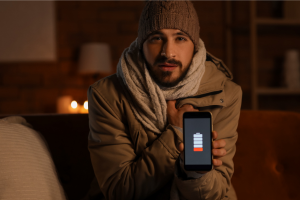 The real trick here is having a means of recharging your cell phone, even when the power is out.
The real trick here is having a means of recharging your cell phone, even when the power is out.
Unfortunately, most of the “solar phone chargers” that are advertised don’t produce enough power to fully charge your phone. It takes several days to fully charge a phone with them.
However, there are solar phone chargers which will fully charge a phone in a day. These are the larger, folding or flexible roll-up chargers, which provide a much greater surface area of solar cells. They are more expensive; but they will do the job, charging a phone in a day; keeping up with your phone’s electricity usage.
Producing Your Own Power
Regardless of how much you are able to do via alternate means, you really should have some means of electrical power production in your home. Some things just can’t be run without electricity and some of those are critical. The big problem is, most preppers don’t invest enough in being able to produce their own electricity. Two solar panels and one battery just isn’t enough.
Just running the essential items I mentioned above will probably require more than a dozen solar panels and a few batteries to store their power. But even that might not be enough, as a snowstorm can cover your solar panels, rendering them virtually useless. Fortunately, the panels are designed to absorb sunlight, so they tend to help make the melting process quick.
We preppers tend to shy away from gasoline generators, because we don’t see them as a viable long-term solution. But we need to re-evaluate that, in the light of short-term emergencies; those that are over in 30 days or less. Storing enough gasoline to run a generator continually for 30 days may be unrealistic; but storing enough to run a portable generator for a week isn’t; especially if that’s an inverter generator, as those burn less fuel. That’s why, if you have a generator on your property, do this immediately.
Whole-house generators are an expensive option, limited to those who have a lot of money. It’s not just the cost of the generator either; those require a lot of fuel and depending on the type of fuel used, it can cost a lot of money to run them. If you can afford it, that’s great; but if not, don’t ignore the possibility of a portable generator.
You may also like:
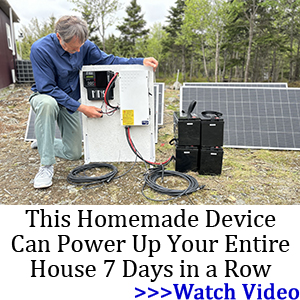 9 Survival Uses for a Blacklight
9 Survival Uses for a Blacklight
How to Hide That You Still Have Power Left in a Blackout (Video)
The Worst Places to Be When an EMP Hits

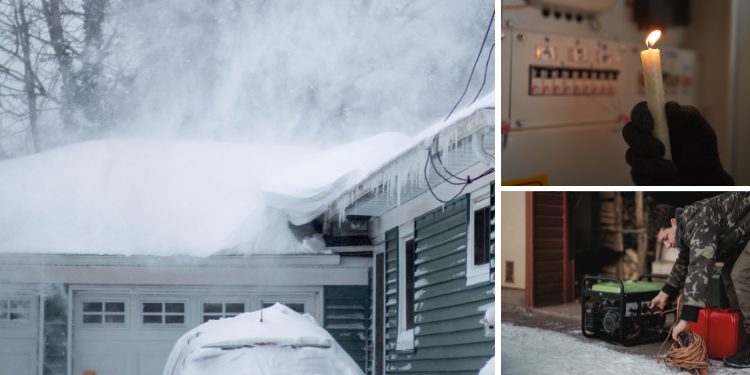
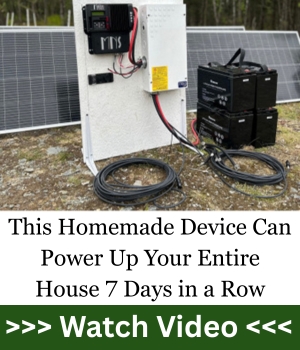
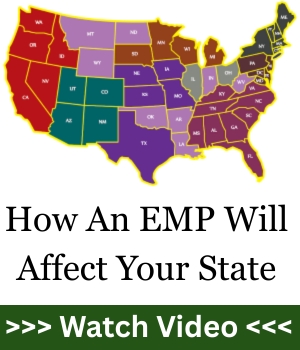



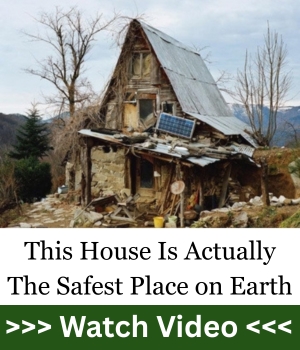


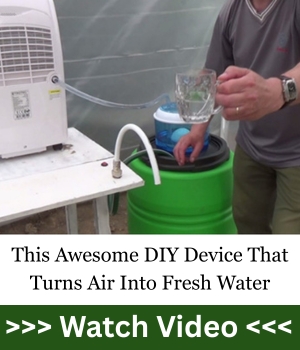




By now we all realize how important electricity is in our lives. The author didn’t need to reiterate. The only real way to blackout proof any home is to have a multi-battery setup using large deep cycle batteries of the kind used in lift trucks. OR; if you can afford it a dedicated 11 or 15kw DIESEL generator that automatically switches on when the power goes off. Most homes these days are on a 200 amp service which translates to a 30kw supply. You don’t need to run out and get a 30kw generator. You just need one big enough to run the essentials like heat and the fridge and freezer if you have one. If you have a well pump that also needs to be taken into consideration. It’s always better to have an alternate way to heat your home. The problem with heat is that if the outage is large enough then the compressors moving the natural gas through the pipes are also out. ALWAYS have extra water on hand.
There seems to be one area of shelter than is always missing in these articles. Those that live in manufactured or mobile homes. These are not homes that can be easily moved because they are, what is considered, a permanent foundation. My home is located in a cold region and we have been known to have several feet of snow with one storm. Lucky for us our state is super aware of how people need power since most homes are all electric. Power outages are usually fixed in an hour or 2. My home is heated with propane but the rest is electric. And living on a fixed income these days means not being able to afford to have things changed out for propane or even have a connection done so a generator can be used to power the house. There’s no trees around either and if we used a wood stove we would have to travel 50 miles or more to cut it and split it. We are retired so this is really not something we can do easily. We can do it. Just not easily. Everything we do is by hand. Very few power tools on the property. What I would like to see is people offering help to others that are in the kind of situation we are in. Moving is not an option for us. Preppers? Yes. But being tossed into the situation we are in at our age means we make do. Bless those that have friends and family that can help them learn prepping skills. Neither of us ever had that.
I invested in some good cold weather clothing when i started my prepper life. Made sure i had some good warm blankets and sleeping bag..All to use for bugging in during winter power outages. Just to start with .
Living in hurricane alley- we have experience with all sorts of electric generation means. The one I do not recommend is the whole house generator. We have a few people out here who have/had them when Ian came through. Really good for a few days, but there is no way to get propane tanks refilled unless you can go get it done somewhere. So, they were comfy for a while and then, nothing. A combination of a small portable gasoline or dual fuel generator is how most of us go. Gasoline will be the first fuel available and we can go get it ourselves. A Honda 2000 will run what keeps life going. Runs just the basics, but not all at one time. Unplug the fridge to run another energy hog. Fridge can hold overnight even in the subtropics. Small people can move a small generator.
I hear all the “have to” things mentioned. Mostly they are “want to” items.
Mr. Heaters are pretty good for heat in a small room. They can be adapted to a 20lb tank to eliminate all the little tanks…and the 20lb tanks are universal for a lot of things.
We lived 6-9 months/year for 22 years off the grid. 12v and propane are just great!
Don’t forget water. Sponge baths get it done.
Wish you do make a separate post for apartment dwellers. We have only electricity, many have no balconies to collect solar energy. We are not allowed to use/store any gasoline or propane, kerosine, etc. We have no generators. We have no balconies so can’t grow food. And if we don’t have any place to bug out to, we are stuck in our apartments…
Eliz…..One can start learning about prepping any time any where no matter if your homeless or a multiple billionaire the technology is there to help you. Even if you rent a house in the country….you are still legally limited to what you can do…If i was you… try to save some money in a bank …ect.every week or paycheck . and study prepping . Good luck. It’s just my opinion…. i know you did not ask for it ….take it or leave it. When i was living in my apartment….I did a serious look at all my vices ….like drinking….smoking….ect. then got a calculator and added up how much i would save a month….a year….and quit…..and put that amount in the bank ….Then study how interest rates work….let your money start working for you……Other’s may have better ideas….no doubt.
Second paragraph in this article: reality is: climate change is real, poor maintenance is real, infrastructure is “not” ours – it mostly belongs to the wealthy and the companies they own. Infrastructure is not owne by the government nor the people. Again, owned by big corporations and the wealthy.
Places that still have above ground wooden power poles is just a shame. Infrastructure with such could save billions to the customers and for the companies in the long haul by putting a majoity of the power grid below ground. This applies to every state. Yes, there are exceptions but the saving and connected underground power supplies woul be so much better.
But that will not happen beause of the short term cost. But if they woked at replacing above ground a little at a time. Think about how many times wooden power poles have been replace do to various types of storms throuhout all the states.
I’ve worked in 48 of the 50 states and visited the other two states. Example: in southern states like Florida (Tampa Bay, Miami and other areas) – was installing fiber optics and most had to be put underground. But some areas we were direct to use the existing power poles. We asked, why? Answer was because the city or county had an ageeement with the power company not to do anything underground as they collected a fee for each power pole from the state, county, city and customer they served.
Winter storm (Uri) of Feb. 2021:
Due to the deregulated electricity market and the spike in demand, wholesale electricity prices increased, in some places by 10,000 percent, from February 10, leading to extremely high bills of up to $450 for one day’s use. Power outages even affected the Big Bend National Park. On February 17, U.S. Senator Ted Cruz stirred controversy when he was filmed boarding an airplane to Cancún, Mexico with his family. He returned to Houston the following day, and admitted he had scheduled the vacation to avoid freezing conditions inside their home.
This is another reason to regulate electricity in all states for all the people. Texas wants to stand alone but when the people of Texas get the blunt end of the extrem cold or extrem heat which is a pointed finger at big businesses and the wealthy. Another thought: Ted (wealthy?) is not a prepper (?) at all or he and his family could’ve just stayed home?
Trust me ….i saved alot of money ….and fast
We just purchased a power station that works as an inverter, charge controller, and includes one of the best lithium iron sulfide battery. We also have generator with which to charge it and plan to have a charger that runs off the battery of our van. This means that we won’t have to be dependent on solar power if the grid goes down and will make a much better use of the gasoline that we do use. Eventually, we will also have solar panels and probably more battery backup.
We heat with wood heat all the time and the woodstove we have is highly energy efficient.
Better if you have a small car 4cyl and a inverter, if your gonna rely on gasoline, for power especially long term. Generators are made for short term use, not long term. The maintenance, the extra additives, it chat allot, and it will only run at most 4-7 hrs depending, and you got to fill it again. Once big red gas can maybe will get you by for a day. So if your stuck with no power, simple is move to your car, run a extension to your fridge if you have to keep it going, hook it up to inverter to the battery, and just start your car every 2- 3 hrs, just don’t let your battery completely go dead. Butt if you got the gas in the car already that is the cheapest way to get constant elec in a emergency. I used a little scion 4cyl engine and a1 battery for almost 5 yrs, 5 bucks in gas would last me at least 2.5 day that was only about 1.5 gallons at the time,1 big red gas can ,5 gallons was like almost 5 days at least. I ran my trailer off that little car, but we only had a TV stereo a couple lights laptop and phones hook to it …
Propane is the only other way to go!!!
And solar lights from the dollar store. You can sometimes get better solar light from there than say Walmart your store. The cheap little solar outdoor spotlights are the best they always work. Just cause it says outside doesn’t mean you can’t charge outside and use it indoors. And there the brightest. But you can get some really good solar flashlights for cheap that last, at least for emergency situations, long term, is still get solar pick lights solar spotlights pathway solar lights there are pretty good and cheap. That’s what I do….. Cheaper to buy a dozen of them for a buck than spend allot of money on one that will last the same amount of time, matter if fact the dollar spotlights are my#1 go to if I need a quick light, in an emergency.
Just saying you really don’t got to spend allot to survive, you just need to access what you got already that can be used, everything mechanical can breakdown at sometime so 30 bucks in lights that will last the same amount if time and is as durable, get 25 lights for that it spend 30 bucks in panels and other stuff you need for a solar system for lighting wouldn’t even get a panel maybe the controller but it’s allot of money to go off grid, it save yourself in a disaster, it’s ridiculous and names me angry any survival stuff is outrageous, they want you to be able to do that save yourself so they don’t have to rescue you but who can afford any if it, so me I will be using my car and using that engine, it’s meant to run long time.